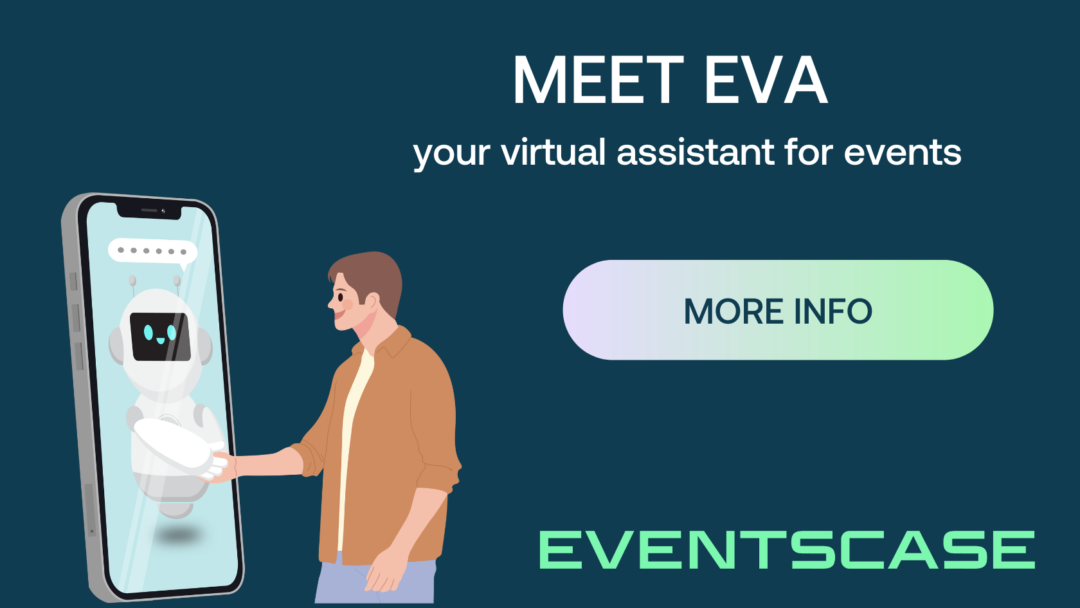Since 2020, the events industry has rapidly adopted emerging technologies that promised to revolutionise the way events are organised and experienced. However, many of these innovations have either failed to achieve the expected impact or emerged too early, requiring further development. Below, we explore some of these technologies in the event industry that, despite their potential, have not taken off as anticipated.
Virtual Reality (VR) and Augmented Reality (AR)
Virtual Reality (VR) and Augmented Reality (AR) emerged as key tools for creating immersive event experiences. They were expected to enable attendees to engage in virtual environments or enhance reality with additional information. However, their implementation has remained limited.
Implementation Challenges for this Technologies in the Event Industry
VR and AR solutions faced several challenges that limited their viability for large-scale events. The lack of adequate technical infrastructure, combined with the limited accessibility of necessary devices, has deterred many organisers from investing in these technologies within the events industry.
High Costs
Developing and implementing VR and AR experiences require significant investment in specialised hardware and software that not everyone can afford.
Accessibility
Not all attendees have the necessary devices to fully engage with these technologies, limiting their reach. Additionally, the lack of standardisation across devices and platforms prevents a consistent experience for all participants.
User Experience
Some users find these technologies complex or unintuitive, which affects their acceptance. The need to learn how to use new devices or interfaces can also be a barrier to widespread implementation.

Although some companies have tried to integrate these technologies into the event industry, lack of infrastructure and resistance to change have hindered widespread implementation. For example, at Integrated Systems Europe (ISE) 2025, innovations such as curved and transparent displays were presented, but their implementation at events in the coming months remains to be seen.
Mixed Reality Glasses and Other Devices
Among the most anticipated technological innovations, mixed reality glasses— such as the Apple Vision Pro—generated a lot of buzz. They were hailed as a revolution for the event industry by enabling immersive experiences blended with reality. However, their implementation also faced obstacles.
Limitations Encountered
Although technologically advanced, mixed reality glasses have failed to gain traction in the event market for several reasons The need to educate both organisers and attendees on their use became an additional obstacle.
Price of Devices
Products from Apple and other manufacturers come with high price tags, making them inaccessible to a large number of users. For example, the Apple Vision Pro starts at $3,499, limiting widespread adoption.
Compatibility
A lack of integration with existing platforms restricts implementation by organisers. Many event management systems are not yet equipped to incorporate these new technologies without significant additional investment.
Learning curve
Some attendees struggle to fully utilize these advanced devices. The need for additional training can pose a barrier to implementation.
Despite the potential of these glasses, widespread implementation at events has not yet been achieved. A combination of high costs, compatibility challenges, and the need for additional training has limited their uptake in the event industry.

Blockchain for Event Management
Blockchain technology promised to revolutionise event management by offering solutions for ticketing, authentication, and data security. However, its implementation has not been as successful as anticipated.
Obstacles Encountered
Although blockchain offers great advantages in terms of security and transparency, its technical complexity has resulted in a steep learning curve for many event organisers. Additionally, mistrust of such a new technology has hindered widespread implementation.
Technical Complexity
Understanding and applying blockchain has proven to be a challenge for many organisers. The technology is complex and requires specialised knowledge for effective implementation.
Lack of Standardisation
The absence of clear standards makes integration with existing systems difficult. Without standardization, different parties involved in an event struggle to collaborate effectively using blockchain.
Mistrust
As a relatively new technology, blockchain raises concerns about reliability and security. For some organisers and attendees, data security and the risk of fraud remain significant concerns.
Despite its potential advantages, such as transparency and security, blockchain has yet to achieve widespread adoption in the events industry.
The Metaverse at Events
The metaverse was another major concept that promised to transform the way people experience events. Technology companies invested heavily in its development, envisioning virtual worlds where attendees could interact and actively participate. However, the reality has been different.
Although the metaverse promised to transform interaction at events, its adoption in the events industry between 2020 and 2024 has been limited. Despite significant investments by technology companies in the development of virtual worlds for attendee interaction, several factors contributed to their limited implementation.
Factors Limiting Its Development
The metaverse concept, while promising, failed to maintain long-term attention due to a lack of practical use cases that provided real value to events. High development costs and inadequate global connectivity also contributed to its limited success in this context.
Insufficient Technological Infrastructure
The metaverse’s technical requirements, such as high-speed internet and advanced devices, were not accessible to all users. This limitation reduced the ability of many attendees to fully participate in metaverse-based events.
Declining Interest
After an initial boom, interest in the metaverse waned due to a lack of practical applications and meaningful event experiences. Many users did not find enough value in metaverse interactions to justify continued engagement.
High costs
Creating professional-quality immersive virtual environments requires significant investment that many organisers are unwilling to make. Additionally, the lack of a clear return on investment has made many hesitant to implement this technology.
The metaverse failed to establish itself as an essential tool for events and was instead relegated to one-off experiments. Despite its potential to offer unique experiences, technical, economic, and public interest challenges hindered its widespread adoption.

Hybrid Events
Hybrid events, which combine in-person and virtual components, were initially seen as an ideal solution for expanding reach and participation. However, while they continue to take place, they have not been as popular as expected, with in-person events remaining the industry standard.
Challenges Faced
Hybrid events require additional resources to maintain both digital and in-person components, often driving up costs and making them difficult for many event organisers to sustain.
Logistical Complexity
Coordinating online and in-person experiences simultaneously presents a significant logistical challenge. It requires detailed planning and additional resources, increasing the complexity of event organization.
Quality of Experience
Ensuring a high-quality experience for both in-person and virtual attendees is difficult, often leaving one group feeling neglected. This impacts overall participant satisfaction and the perception of the event.
Additional Costs
The need to invest in additional technology and staff increases organisational costs. This makes many organisers reconsider the feasibility of hybrid events.
Although hybrid events offer flexibility, many organisers have opted for traditional formats due to these challenges. However, we are confident that this type of event will see significant advancements in the coming years.
Conclusion
Between 2020 and 2024, several emerging technologies promised to transform the event industry. However, factors such as cost, technical complexity, privacy concerns, and logistical challenges limited their adoption. Progress, however, requires trial and error, and the history of technological development and innovation is littered with missteps that have ended up as breakthroughs after necessary reconsideration.
It is essential for organisers to carefully evaluate the advantages and disadvantages of each technology before implementing them, ensuring that they genuinely enhance the attendee experience.
If you would like to subscribe to our newsletter to get live updates on everything related to our platform – news, blogs, events, announcements and much more, please, register here.






